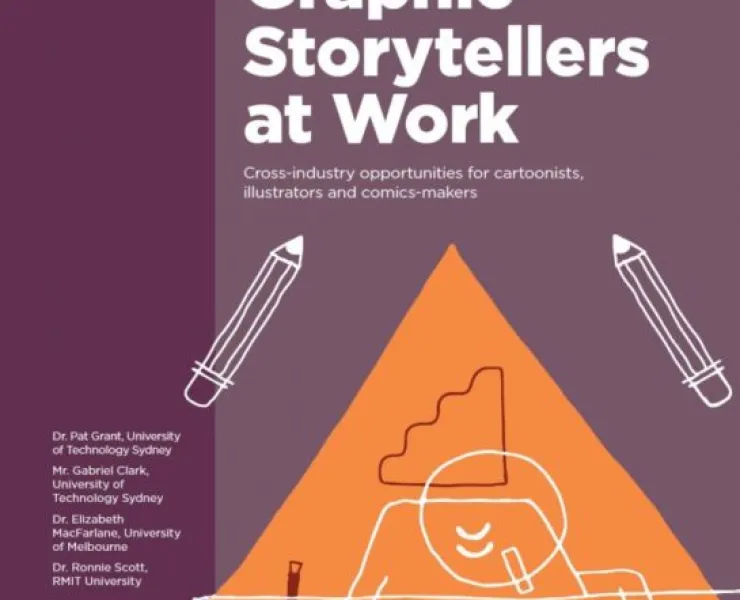Breadcrumb
Overview
Graphic storytellers make complex ideas easy to understand. Their technical and interpretive skills help to illustrate abstract concepts and transcend language barriers. So, we’ve commissioned Graphic Storytellers at Work: Cross-industry opportunities for cartoonists, illustrators and comics-makers, a new report which explores how the skills of cartoonists, illustrators and comics-makers are being applied. This happens across a diverse range of industries such as health and education.
Graphic Storytellers at Work: Cross-industry opportunities for cartoonists, illustrators and comics-makers
Graphic Storytellers at Work: Cross-industry opportunities for cartoonists, illustrators and comics-makers from Australia Council for the Arts on Vimeo.
Artists surveyed described using their skills to communicate important health information to culturally diverse communities, translate complex legal documents, or create tools and resources for psychologists and surgeons.
The report provides a fascinating portrait of the professional lives of Australia’s cartoonists, illustrators and comic-makers and highlights the huge potential for the cross-industry application of their skills. It was led by comics-makers and comics researchers Dr. Pat Grant (Lecturer, School of Design, UTS) and Mr. Gabriel Clark (Lecturer, School of Design, UTS), along with Dr. Elizabeth MacFarlane (University of Melbourne) and Dr. Ronnie Scott (RMIT University). All four are active within the Australian graphic storytelling community and are based in either Melbourne or Sydney.
Key Findings
- Demand for graphic storytellers is growing – 41% of those surveyed reported increasing demand for their skills.
- Health – graphic storytellers have the ability to help people understand complicated medical ideas. 15% of artists surveyed had used their skills in health contexts including medicine, health and wellbeing and safety.
- Education – 28% of survey participants describe their skills as being useful in an educational setting, from internal organisational training to public-facing education programs.
- Product design – graphic storytellers can become indispensable as part of the design of new products and services, particularly services that may exist in as-yet unrealised futures, or within services that require complicated user interaction.
- Making a living as a graphic storyteller can be challenging – half of the artists surveyed support themselves with work that is non-creative (50%). Almost half list ‘lack of financial return on their practice’ as one of the top two challenges for their practice (47%).
- One in four surveyed artists make 100% of their income from creative work – of this group, 43% are high income earners, making over $100,000 per year.
- The combination of technical and interpretive skills is a large part of the graphic storyteller’s value. New opportunities are emerging for the use of visual language in internal communications, storytelling, mapping, strategic thinking and visual problem-solving.
- The face of graphic storytelling in Australia is changing – older artists are more likely to be male (85% of artists over 60 years), and younger artists are more likely to be female (54% of artists between 18–29), non-binary or transgender (19% of artists between 18–29).






